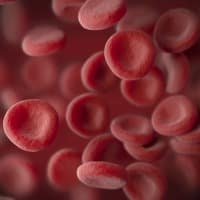New cell subtypes in the human immune system have been identified by researchers working on the Human Cell Atlas project. The identification of these cell subtypes is considered a major finding. The recently discovered cells are new classes of dendritic cells and monocytes, which are types of white blood cells. Two new dendritic cell subtypes and two monocyte subtypes have been revealed.
In layman’s terms, this discovery means the scientists have discovered new blood cells within the human body. The researchers also discovered a new progenitor of dendritic cell. The findings were published in the April ’17 edition of the popular journal Science. The study was funded by the Wellcome organization, a biomedical research charity based in London.
Blood, Monocytes and Dendritic Cells
Human blood has several different types of cells, some of which are components of the body’s immune system. There are three main types of cells within the blood: white (WBC), red (RBC) and platelets. Dendritic cells (DCs) have molecules referred to as antigens on their surface. These molecules can be identified thanks to T cells that spur immune responses in the body. Monocytes are the largest WBC within the blood of human beings. Such cells have the potential to grow to macrophages that consume the debris within human cells.
Monocytes and DCs have numerous specialized subtypes that are essential for antigen presentation, phagocytosis, and pathogen sensing. Yet the understanding of such cells and how they relate to one another and the rest of the human body is still unclear. In the past, an array of surface markers, functions, developmental origins, localization, morphology, and functions have defined such populations.
A Look at how the new Cells Were Found
Previous experiments examined an array of immune cells, defining them based on surface marker proteins. The new experiment involved the use of single-cell genomics to view and understand expression patterns within individual blood cells. Researchers conducted single-cell RNA sequencing of over 2,000 cells to find the new blood subtypes. The cells were pulled from blood donated by healthy individuals. The single-cell profiling approach and unbiased genomic classification combined with subsequent profiling and phenotypic/functional characterization of specific subsets allowed the researchers to pinpoint and validate half a dozen DC subtypes. This approach also allowed for the identification of four monocyte subtypes.
Why the Study Results Have Been Widely Celebrated
The study is important beyond the fact that new subtypes and progenitors within human blood cells were discovered. The researchers state this study has provided them with a deeper understanding of the functions of dendritic cells and monocytes. As time progresses, researchers will eventually determine what each type of cell does in the immune system during periods of flawless health as well as periods of disease.
Such a new means of classifying immune cells will assist researchers in their analysis of cell functionality and development. The new classification method will also help gauge the functionality of immune systems morning, day and night for constant monitoring.




